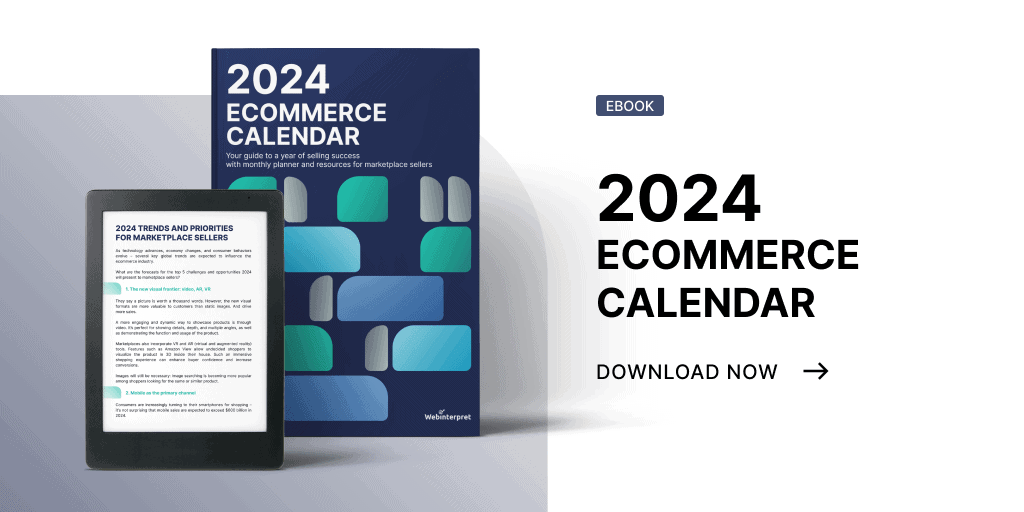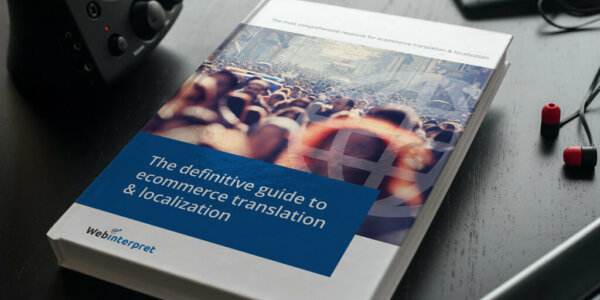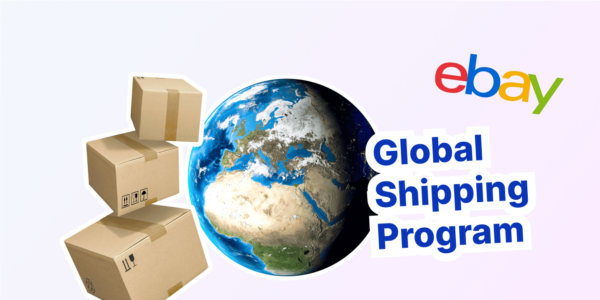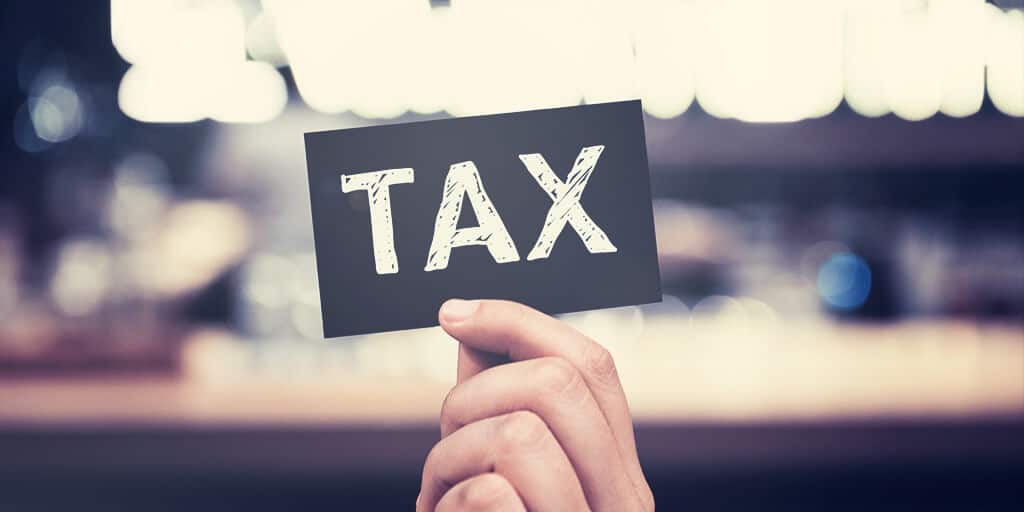
The comprehensive guide to VAT in Europe for ecommerce sellers
This article will give you some solid background about VAT in Europe. Read more about basic terms, VAT rates, VAT registration, exemptions and much more.
Ecommerce in Europe is expected to be worth 717 billion euros at the end of 2020 (12.7% increase compared to last year). Western Europe is still the most developed ecommerce market in Europe and has the highest share of online shoppers.
However, a big ecommerce sales growth can be observed in different parts of the continent.
Learn more about VAT in Europe to make your international expansion into Europe easier.
European ecommerce & VAT: general information
For starters, please note that the goal of this article is to provide you with comprehensive, background information about VAT in Europe. Still, in case of any doubts we encourage you to seek legal advice and follow relevant official websites, especially after 1 January 2021 when Brexit becomes reality.
The European Union value added tax (or EU VAT) is added on goods and services within the EU. It’s up to and including the sale to the final consumer. This can include each stage of a production process, e.g. purchasing components, assembly, shipping, etc.
Unlike sales tax, VAT is collected at each stage of the supply chain. Suppliers, manufacturers, distributors, retailers and end consumers all pay the VAT on their purchases.
To compare, sales tax in the U.S. is imposed only on the final consumer.
VAT applies to all taxable persons, EU-registered corporates and individuals that carry out regular supplies. Typically it exempts public offices and government.
A few basic facts about EU VAT:
- EU VAT applies to all 28 member states with the exclusion of some territories, e.g. the Canary Islands (Spain), Gibraltar and the Channel Islands (UK).
- There are broad VAT rules through European VAT Directives. They’re standard, but EU countries can apply them differently.
- For EU-based companies, VAT is chargeable on most sales and purchases within the EU. Some goods and services are exempt from VAT, e.g. postal services, medical care, insurance.
- On exports to countries outside the EU, VAT isn’t charged. In such cases the import tax is paid in the country of import. The requirement is to provide evidence that the goods were exported to a non-EU country.
Ecommerce & VAT rates in the EU
Different VAT rates apply in different EU member states. They can range from the reduced 0% VAT rate in Belgium to 27% in Hungary. You can check the VAT rates online, but it’s good to confirm the latest rates with your local VAT office.
Standard rate
Each country has a standard rate applying to most supplies. The EU gives freedom to the 28 member states to set their standard VAT rates, but not lower than 15%. The lowest standard VAT rate throughout the EU is 17%.

Different VAT rates apply in different EU member states. They can range from 17% in Luxembourg to 27% in Hungary.
Reduced rate
Reduced rates (2 maximum) may apply to a limited variety of sales. Normally they cannot go below 5%.
Super-reduced rate
Some countries apply a super-reduced rate below 5% on some sales. For instance, there’s a super-reduced rate of 4% in Spain applied to certain services, e.g. maintenance of means of transport for people with disabilities.
Zero rate
Some countries apply zero rates on certain sales. In the case of zero rates, consumers don’t have to pay VAT. However, you still have the right to deduct the VAT you’ve paid on purchases directly related to the sale.
Special & parking (intermediary) rates
Some countries are allowed to apply specific special rates on some sales. A parking rate applies to some goods and services that are not eligible to a reduced rate.

The EU gives freedom to the 28 member states to set their standard VAT rates, but not lower than 15%.
International ecommerce & distance sales regulations
When goods or services are sold (and sent) to a private person in a different member state, the buyer usually pays VAT to the seller. VAT is not paid in the buyer’s country. VAT is not due in the buyer’s country when the value of goods sold doesn’t exceed the distance selling threshold.
However, the seller’s annual sales to the buyer’s country may exceed a threshold (that varies by country). This is related to the distance selling rules. When this is the case, the seller must register and obtain a VAT number in the country where the threshold was exceeded. Then the seller has to declare and pay the VAT in that particular country (charge VAT in the buyer’s country).
Let’s say, a seller in one member state sells goods directly to VAT-exempt organizations and individuals in another member country. Further, in any 12 consecutive months the aggregate value of goods sold to consumers in that member state is below €100,000 (or the equivalent; this value also depends on the destination country). Thanks to distance sales treatment, sellers can apply domestic place of supply rules to determine which member state collects VAT. In other words, VAT is charged at the rate applicable in the exporting country.
If the value of goods sold to final consumers in a member state exceed €100,000, the exporting seller must charge VAT at the rate applicable in the importing country.
There’s also a special threshold amount of €35,000. This can be the case if the importing country fears that competition would be distorted without the lower threshold amount.
VAT in international ecommerce: practical example
A Polish merchant sells TV sets to Germany. In the beginning the value of the goods the seller sells is below the threshold (€100,000). As a result, the Polish VAT rate is applied (23%), for example €100 net product price + 23% VAT paid in Poland = €123 in total.
At some point in the same fiscal year, the same Polish seller may sell so many products in Germany that the threshold (€100,000) is exceeded. Then the seller has to register for a VAT number in Germany and will now apply the German 19% VAT rate. As a result, the total product price will be €119 = €100 net product price + 19% VAT paid in Germany.
Importation of goods from non-EU countries
Goods imported from non-EU countries are subject to VAT and duties at the rate applicable in the member state to which the goods are imported. Normally VAT is charged at the border, along with customs duty.
However, there’s an exception (Low Value Consignment Relief) in the case of low-value shipments. It has to do with de minimis value: the threshold from which the imported goods are subject to duties.
VAT paid on importation is treated as input VAT, the same as VAT on domestic purchases.
EU VAT number registration
Companies operating across the EU may have to register their business with a VAT number in another EU country. Requirements vary from country to country, but are based on the EU’s VAT Directive.
Foreign merchants may have to register for a local VAT number in the following cases:
- When a foreign company buys and sells goods in another country
- When a company imports goods into an EU country, which can include moving goods across state borders within the EU
- When holding goods for customers in warehouses or on consignment stock in other EU countries
- When holding live conferences, exhibitions or trainings where entrance fees are charged
- When selling goods over the Internet or through catalogs (distance selling)
- Other cases, e.g equipment supply and installation in a limited number of situations; selected services.
It’s also worth mentioning FBA (Fulfillment by Amazon): if the seller wants to store goods in a given country, they first need to register for VAT.
These requirements apply equally to companies from both within and outside the EU. Normally, non-resident companies must register for VAT immediately. It’s important to check out resident companies’ VAT registration thresholds.
The simplification of VAT rules for ecommerce sellers
The good news is that the EU strives to harmonize the European VAT system. It’s down to the drive towards an EU single market for goods and services. As a result, the VAT registration requirements should be uniform in each country.
In the single market there’s a co-ordinated administration of VAT within the EU VAT area.
Cross-border VAT is declared in the same way as domestic VAT.
This saves costs, simplifies administrative work, reduces delays and generally facilitates the elimination of border controls between member countries.
In December 2017, the finance ministers of the EU agreed on new tax rules. The goal was to simplify regulations and make it easier for online businesses to comply with VAT obligations.
In the future (upcoming years), online retailers won’t have to register for VAT in each EU country. Instead, they’ll be able to file a single tax return for the entire EU.
The expected benefits of this move include:
- Reduced costs for ecommerce businesses
- Increased tax revenues of EU countries
- Reduced bureaucracy and administrative burdens.
How to get a European VAT number
Companies must be VAT (EU companies) or tax (non-EU companies) registered. Then, they’ll need to complete and submit a local VAT registration form and supporting documentation.
The application form is likely to be in the local language. There’s a reluctance towards using document translations to prevent misunderstandings.
Supporting documentation typically includes:
- Proof of VAT/tax registration in its country of domiciliation
- The certificate of incorporation of the company (original copy)
- The company’s Articles of Association (copy)
- An extract from the national company registrar as proof of existence
- Proof of the planned trade, e.g. invoices or contracts
- Letter of Authority or Power of Attorney (if the company appoints a local tax agent or Fiscal Representative).

When the company has received the VAT number, it can start trading and charging VAT on its foreign transactions.
After submitting the application, it’ll take 2-8 weeks to receive a VAT number, depending on the country. Each country has its own number formats and you can review them in the EU VAT Number Format briefing.
To prevent VAT fraud, the tax authorities may ask further questions. There can be additional requirements in certain countries.
When the company has received the VAT number, it can start trading and charging VAT on its foreign transactions.
MOSS VAT returns
Mini-One-Stop-Shop (MOSS) is a single VAT reporting Internet portal that enables quarterly filings by e-services providers covering all EU countries.
MOSS was created to:
- Help simplify the B2C digital services’ VAT compliance requirements
- Alleviate the need for businesses to VAT register wherever their customers are.
EU companies can register with the portal in their EU country of residence. After successful application, they’ll get access to the online portal.
Quarterly VAT returns are due by the 20th of the month following the quarter end. Then it’s the responsibility of the receiving tax authority to divide up the VAT received and transfer it to the relevant member states of the consumers.
Output & input VAT
Output VAT, i.e. VAT on its output supplies, is charged by a business and paid by its customers.
Input VAT, e.g. VAT on its input supplies, is paid by a business to other businesses on the received supplies.
Input VAT can be recovered by being offset against the output VAT for which the business is required to account to the government. In the case of an excess, by claiming a repayment from the government.
The final consumer doesn’t get a credit for the VAT paid. What’s the net effect of this? Each supplier in the chain remits tax on the value added. Ultimately the end consumer pays the tax.

Each supplier in the chain remits tax on the value added. Ultimately the end consumer pays the tax.
Intrastat, ESLs, EORI, place of supply & Tax Point
Each member state has its own reporting threshold. These are Intrastat declarations: mandatory statistical returns allowing the tax authorities to monitor the movement of goods within the EU.
EC Sales Lists (ESLs) document intra-community B2B sales and stock movement between EU countries to manage the movement of taxable supply. They’re filed in the outbound country with the VAT return.
Before shipping goods to Europe, you’ll need to apply for EORI: European Operator Identifier Number (linked to your VAT number). It allows customs officials in Europe to identify your shipments and issue documentation allowing you to reclaim the import VAT paid at customs.
To understand which country’s VAT rules should apply to the transaction, a place of supply of goods/services must be determined.
For goods, the place of supply can be:
- The location at the time of supply
- For deliveries: the start of the journey.
- For intra-community supplies: the location of the customer
- For imports: the country where the goods cleared into free circulation
- For gas, electricity and similar power supplies: the location of the customer.
The Tax Point is the point in time when the VAT tax falls due. It’s usually when the goods/services are delivered to the customer. The taxable amount includes any duties and incidentals, but excludes VAT. For imports, it’s the same value as declared for customs’ purposes.
Exemption from VAT vs. 0% VAT
If you make exempt supplies, you’re a taxable person, but not an accountable person. You’re not entitled to register for VAT unless you also make taxable supplies. Some goods and services, such as healthcare, education and financial services may be exempt from VAT, without the right to deduct.
There’s a difference between goods/services exempt from VAT and those subject to 0% VAT.
The seller of exempt goods isn’t entitled to reclaim VAT on business purchases, contrary to the 0% VAT case.
Consider this example. A book manufacturer from Ireland purchases paper including VAT (23%) and sells books at the 0% rate. This manufacturer can reclaim the VAT paid on the paper as the business is making taxable supplies.
Now think about non-profit organisations, e.g. sports clubs, in countries like Finland and Sweden. They’re exempt from all VAT and must pay full VAT for purchases without reclaim.
Sell more on European marketplaces in 2020 & beyond
Webinterpret supports merchants selling on big, international ecommerce platforms, such as eBay and Amazon as well as more local marketplaces. We support sellers in Europe and other continents.
Our marketplace offer is constantly expanding so if you want to grow your online sales, feel free to contact our sales experts. They will help you analyze your international sales potential and choose markets that will offer you the best possible return on investment.
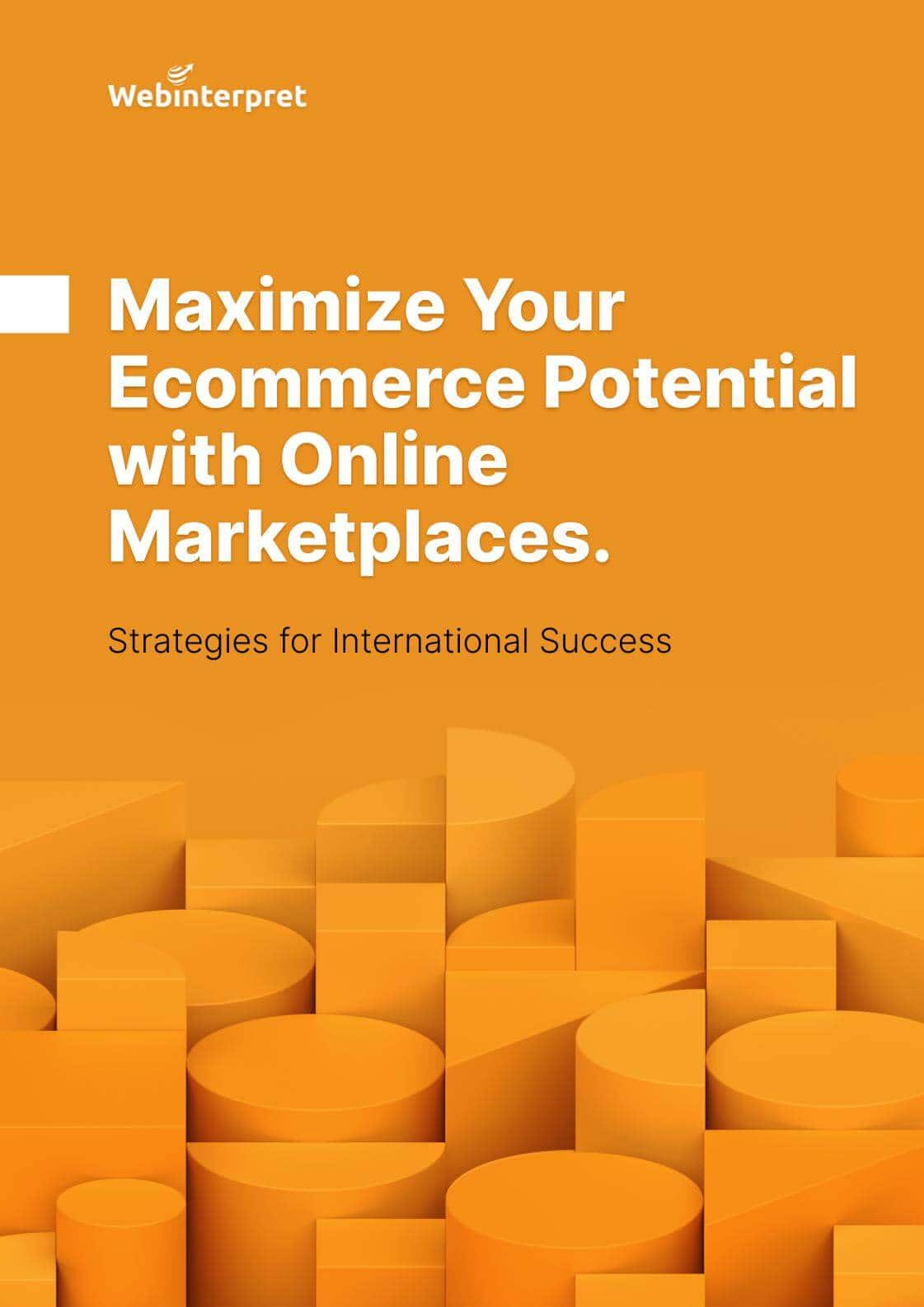
Discover proven strategies for international success!
Sources
Related Posts:
Ecommerce Newsletter
By clicking the “Subscribe now” button, you agree to receive our monthly e-mail newsletter and regular marketing and commercial communications by email from Webinterpret regarding marketing trends and our digital marketing services. You confirm that you have read and agreed to Webinterpret’s Terms of Service and Privacy Policy.
